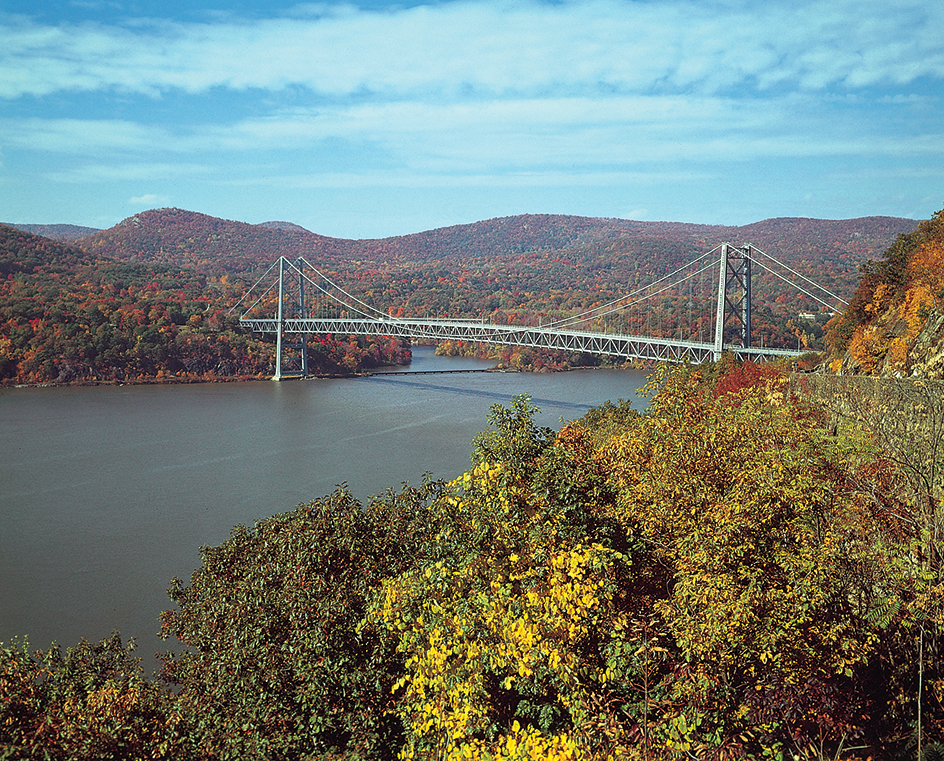Hudson River is a major United States waterway. It flows from the Adirondack Mountains to the Atlantic Ocean. New York City’s harbor lies at its mouth. The English explorer Henry Hudson, working for the Dutch East India Company, sailed up the river in 1609. Algonquian-speaking Native Americans were the earliest people known to live in the region.

The river, named for Henry Hudson, is 315 miles (507 kilometers) long. It lies almost entirely in New York state. For about 25 miles (40 kilometers), the river forms a boundary with New Jersey. The Hudson begins on the slopes of Mount Marcy, 4,313 feet (1,315 meters) above sea level. It flows southward, passing Glens Falls, Troy, Albany, Kingston, Poughkeepsie, Newburgh, and Yonkers. It then reaches New York City and the New Jersey cities of Hoboken and Jersey City. The Mohawk River is the Hudson’s largest tributary. It flows east from central New York state to join the Hudson just north of Troy.
The Hudson has two distinct sections. North of Troy, the river has many rapids and waterfalls. Such falls were once used to power textile and lumber mills. Near Troy, the Hudson enters a valley deepened by glaciers. South of this area, the river’s bed lies below sea level and is subjected to tides from the Atlantic Ocean. Thus, oceangoing vessels can travel along the river as far north as the Troy-Albany area. The valley is relatively broad from Troy south to the city of Newburgh. From there it narrows through the Hudson Highlands. Farther south, high, rocky cliffs called the Palisades rise along the New Jersey shoreline.
The Hudson Valley has long provided an important lowland corridor through the Appalachian Mountains. People have traveled the corridor between New York City and the Troy-Albany area by canoe, sailing ship, turnpike road, steamboat, railroad, and superhighway.
Historians believe Giovanni da Verrazzano, an Italian navigator and explorer, was probably the first European to reach the Hudson River, in 1524. During the 1600’s, the Dutch became the first Europeans to settle in the region. The Hudson River Valley was an important military center during the French and Indian wars (1689-1763) and the American Revolution (1775-1783). In 1802, the U.S. Military Academy was established at West Point in the Hudson Highlands.
Completion of the Erie Canal in 1825 made the Hudson one of the nation’s chief transportation routes. The canal linked the Troy-Albany area and Buffalo, New York, a gateway to the Great Lakes (see Erie Canal ). New York City, at the river’s mouth, saw its position as America’s largest city and chief port become even stronger.
In the 1800’s, many Americans and Europeans traveled along the Hudson. They admired the Catskill Mountains to the west and the farms and estates along the eastern shore. Artists of the Hudson River School celebrated the region’s spectacular scenery. Elite New Yorkers built impressive mansions there. Since the 1960’s, the Hudson has been the focus of a number of environmental campaigns. Conservationists have worked to preserve the region’s landscapes and open space, resist new industrial and power projects, and ensure the removal of toxic chemicals from old industrial sites between Glens Falls and Troy.
